FORT BENNING, Ga. — A series of simulated missions and battles played out here at the Maneuver Center of Excellence in March.
Soldiers participating in the Army Expeditionary Warrior Experiments annually try out new gear offered by industry and government initiatives over the course of about a month. During the final week of this latest trial, about 81 soldiers, 61 of them from Alpha Company, 1st Battalion, 29th Infantry Regiment, squared off against a somewhat less-equipped opposition force of contractors and other military personnel.
The opposition force told Army Times that the technical handicap frustrated their efforts significantly.
"They handed us our butts," contractor James Clayton told Army Times after a battle. "The technology, it's going to save a lot of lives on the battlefield."
This year's AEWE examined 66 technologies that ranged from flying cameras to RPGs to thermal signature-masking covers to robotic practice targets. As it is not part of any acquisition process, the event simply offers a trial run to inform the Army of what's out there.
There are no guarantees you'll ever get to play with these toys; however, some are eventually placed in soldiers' hands. Other items remain in prototype phases.
Either way, soldier feedback is vital in determining whether the Army moves forward with technology.
Here are just some of the nearly 70 items that recently faced soldier scrutiny:
PD-100 Black Hornet
What it is:
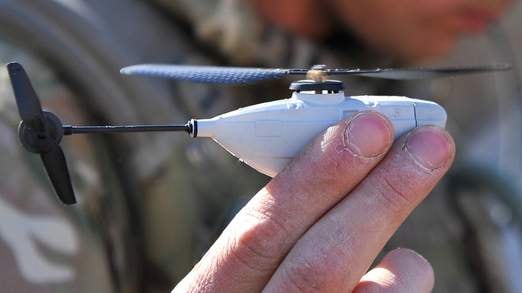
Prox Dynamics' PD-100 Black Hornet.
Photo Credit: United Kingdom Ministry of Defense
A small hand-held terminal receives the feed and controls the bird.
It's also durable: When the wind blew it into a building March 3, Spc. Julius Jarosz picked it up, looked at it, and remarked: "Didn't even hurt it." Jarosz also said training to use the UAV was quick and simple.
Why soldiers should care: This small, virtually silent mini-scout gives instant squad-level reconnaissance. Prox Dynamics notes that the United Kingdom first used the device in Afghanistan in 2012, and the Norwegian company has supplied the U.K. and Norway with hundreds.
Staff Sgt. Andrew Smith said that during one practice mission to take a town, the unit initially planned to enter the main street and assault any enemies that might be inside buildings.
But after a Black Hornet run, they found back doors (as well as an enemy on the roof) and changed course. In another exercise, soldiers watching the mini-copter's feed initially saw a man in the woods. When they played back the video, they realized there were actually four. Smith said he could imagine plenty of uses from his prior deployments.
"I was in Basra [Iraq]. There's a lot of roads that you don't really know where they go," Smith said. "In Afghanistan, I can't tell you the number of times you just want to know what's on the other side of a hill."
InstantEye
What it is:The InstantEye weighs about a pound and measures nearly 10 inches. It can cruise at 35 mph or hover.The quad-copter can stay up for 20-30 minutes depending on payload. It comes with a camera that can also feed an infrared video to its controller at a range of 1,000 meters (with line of sight). A hand-held device controls and monitors it. The device can operate in winds of more than 30 mph and at altitudes as high as 12,000 feet.
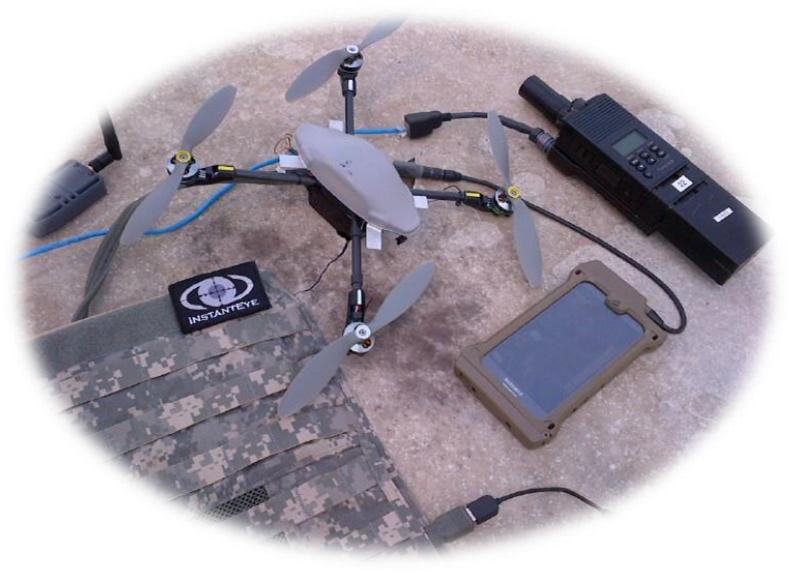
The InstantEye
Photo Credit: AEWE
Why soldiers should care: This UAV has night vision, plus it can travel safely in wind. This model would cost the Army less than $1,000 per unit, according to Congressional testimony last year from Alan Shaffer, principal deputy, assistant secretary of Defense, Research and Engineering. Shaffer used the Instant Eye as an example of the benefits of fielding operational prototypes. Shaffer said U.S. troops were able to use the device to identify and neutralize seven insurgents in Afghanistan. These insurgents were waiting to ambush the patrol. Multiple soldiers at AEWE singled InstantEye out among UAVs.
"InstantEye checks all the boxes," said Capt. Kenneth Weiss, who commanded the experimental force in the field. He cited reliability, night vision and ease-of-carry among its distinguishing attributes, as well as a quick set-up. "You can pull it out, set it up, and throw it in the air. It didn't require a lot of user interface."
RPG-7(USA) Rocket Launcher
What it is: The RPG-7(USA) offers an American-made take on the RPG. The 40 mm launcher can fire all existing rockets, according to maker Airtronic USA, Inc. The company says the launcher is durable (1,000-shot life cycle), low-cost and boasts all the effectiveness that has made RPGs the world's man-portable anti-armor weapon of choice. It has an effective range of 300 meters and max range of 1,000 meters, round-dependent.
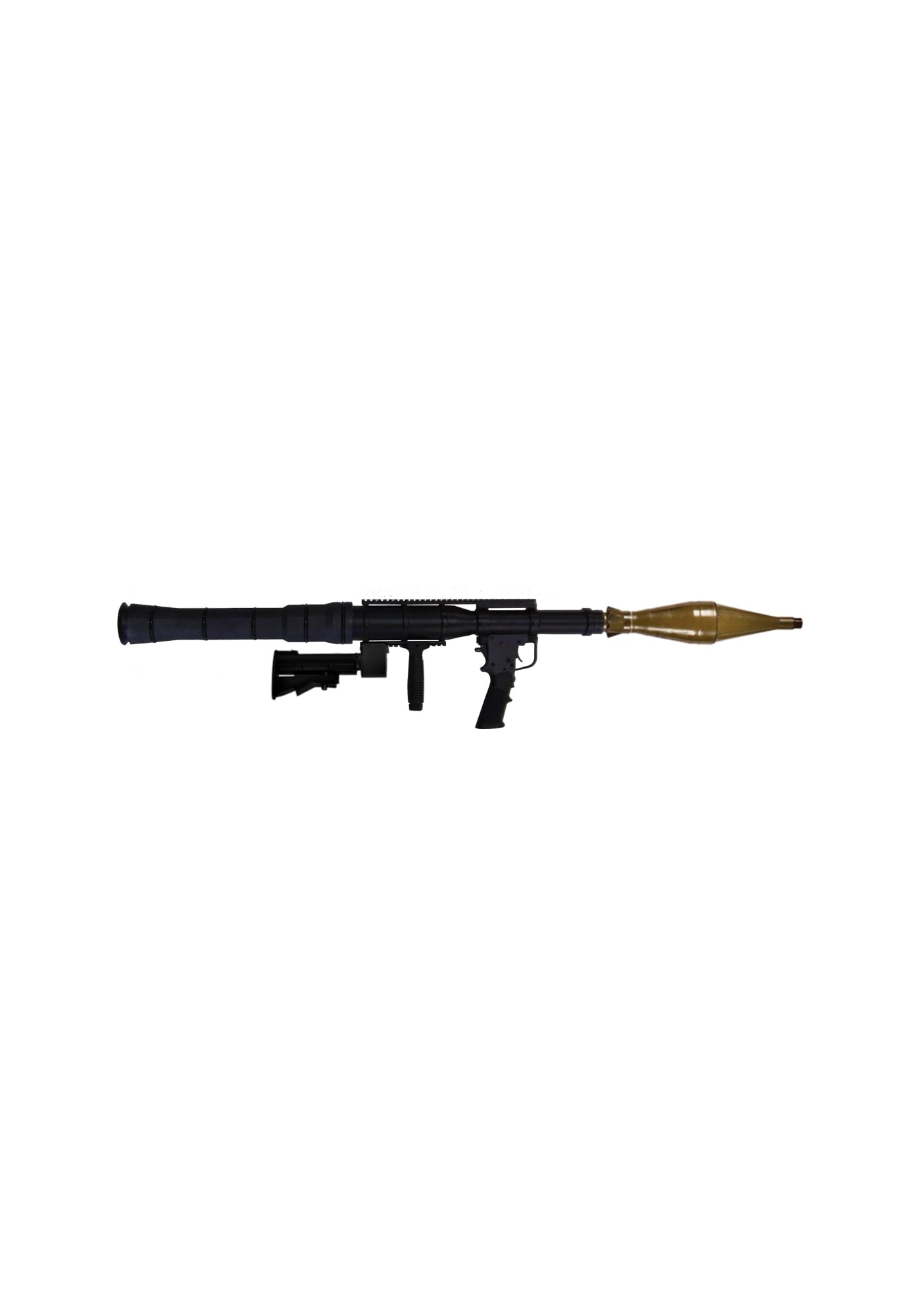
RPG-7(USA) Rocket Launcher
Photo Credit: AEWE
U.S. soldiers don't use the multi-rocket launchers, largely because of safety and reliability concerns, according to Lam. He said the joke in the Pakistani Army, for example, was that soldiers would draw straws after the weapon had been fired a few times. The U.S. has lightweight antitank weapons and AT4 antitank weapons, but they are one-shot-and-done.
Soldiers in the recent trial weren't able to test-fire the RPG-7 because it hadn't been fully vetted for safety by the Army, but it was live-fired by Airtronics employees.
"I was impressed by how fast you could switch out the rounds. We're looking at 3-4 rounds per minute," said Sgt. Alberto Rosario. "Once the enemy sees that we field these it will be a big shock."
Lam said soldiers expressed a desire for the weapon to fire guided munitions, a suggestion he'll take back to the company.
Mini-Multi-Purpose Infantry Munition
What it is: In short, M-MPIMS is a smaller, more precise, and more reliable Claymore. The two-pound device has a little more surface space than an average smartphone. Its effective range is 50 meters. At its optimized range of 30 meters, the fragmentation zone is 23 meters wide and 2 meters high, with a minimum of five hits per square meter. The unit can be equipped with a Picatinny rail for camera, laser or other attachments.

The Mini-Multi-Purpose Infantry Munition.
Photo Credit: Mike Morones/Staff
The mine offers a shelf life of about 25 years, which Heilig said is much longer than the current model. In addition, he said it is insensitive (a bullet or mortar hit won't explode it). Its specs say it lowers the rear-safety distance to 15 meters.
AN/PSQ-20 Enhanced Night Vision Goggle
What it is: The multimodal, single lens ENVG offers the traditional night imaging that brings green light to darkness.
More crucially, it offers thermal imaging, which makes warm-blooded bodies light up like they are on fire, making them easy to detect at greater distances and with less movement.
At two pounds, the helmet-mounted unit is heavier than the 1.2-pound AN/PVS-14 standard night vision unit, according to PEO Soldier's portfolio. ENVG units, which can operate for nearly eight hours, are also substantially more expensive.
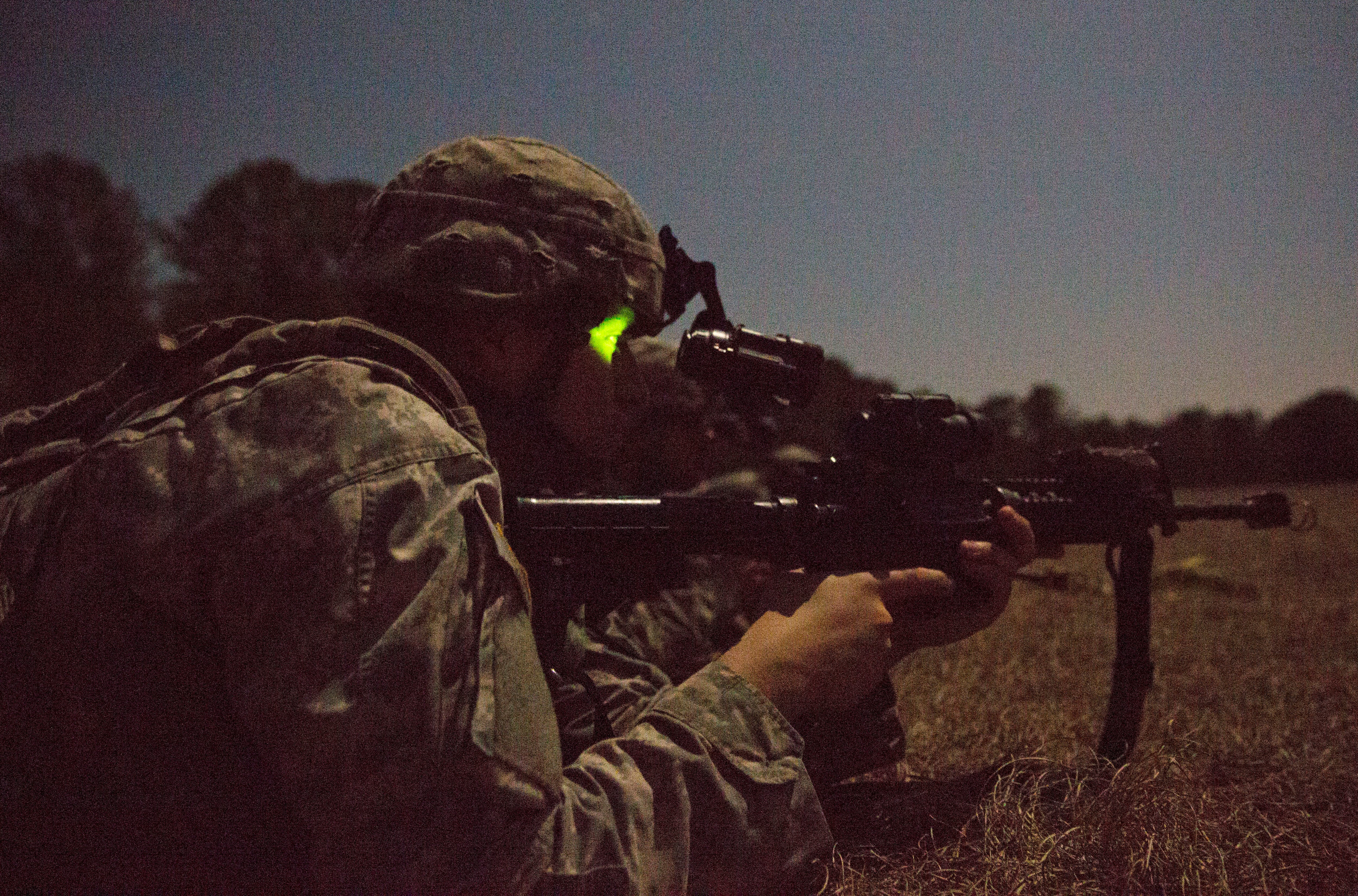
A soldier uses improved night vision optics during the Army Expeditionary Warrior Experiments.
Photo Credit: Mike Morones/Staff
"Instead of responding to contact, we imitate contact almost every time," Lt. Brandon Slusher told Army Times minutes after a late-night firefight in which his side routed an opposing force with an undetected flanking maneuver.
The technology was used two years ago at AEWE, but not last year, which prompted soldiers to ask why not, according the Maneuver Battle Lab's Live Experiment Branch's chief, Harry Lubin.
"We're lucky to even have these. They should be with a deployed force," Slusher said.
Scalable Offensive Hand Grenades
What it is: This modular grenade system offers soldiers a dial of destruction for their hand-tossed explosives. The base grenade has a 3.5-second fuse, and soldiers can choose to attach a second or a third module; each module weighs 115 grams (1/4 pound) giving it a range of ¼ pound to ¾ pounds of explosive payload.
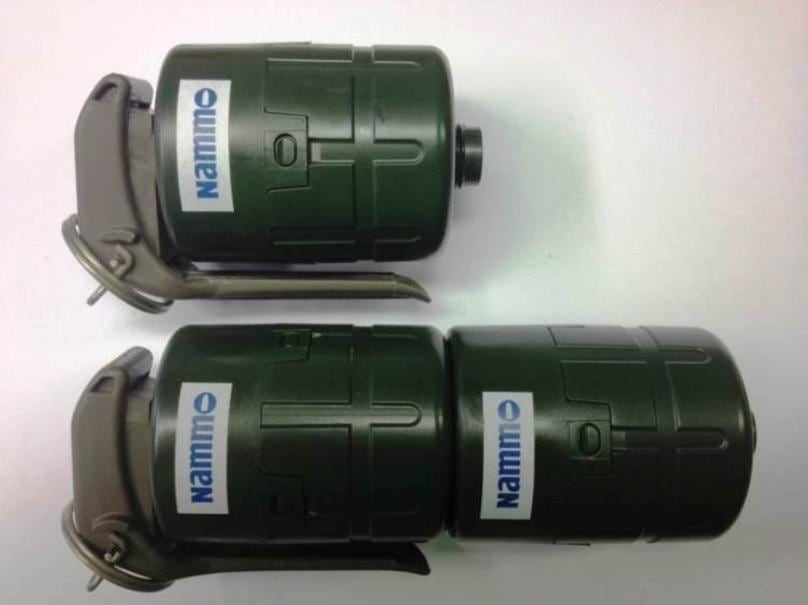
Scalable Offensive Hand Grenade
Photo Credit: AEWE
"It's the first time I've ever used it," Spc. Scott Crickenberger said. "It was really easy and effective."
The modular grenades have been used by Special Forces in recent years.
TowerHawk
What it is: "It's basically a sniper rifle on a tower," said Capt. Weiss. The TowerHawk Weapons System is a transportable remote weapons system that provides extended range precision, surveillance and perimeter defense. It fires a .338 Lapua Magnum semi-automatic rifle and uses a day and night optic, a laser rangefinder/pointer, infrared sensor, and secure fiber optic communications between weapons and ground station. The Army initiative provides the ability to engage man-sized targets from 1,200 meters.
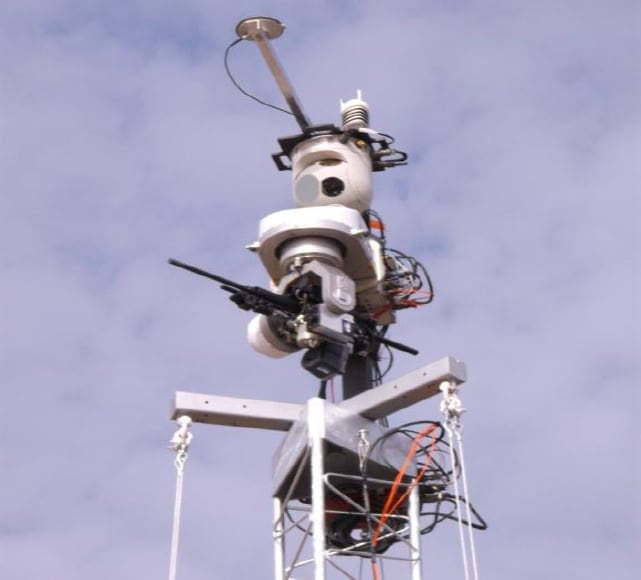
TowerHawk described as "a sniper rifle on a tower."
Photo Credit: AEWE
"It is extremely effective at providing over-watch," Weiss said of TowerHawk.
While Weiss praised TowerHawk's pinpoint accuracy, Sgt. 1st Class Chad
"You can hook it up to a helicopter, fly up on top of a mountain, and operate it remotely," Emerson said. "All the way around it's better."
The only bad reviews Emerson said he heard involved the camera, but the company is working to add a better, infrared camera than the one tested.
Argo Amphibious Lightweight Tactical All Terrain Vehicle
What it is: An eight-wheeled vehicle designed for light infantry and special operations forces. The amphibious diesel-powered vehicle maxes out at 17 mph cross country; it has an internal cargo capacity of 1,340 pounds and can tow 2,000 pounds.
Why soldiers should care:
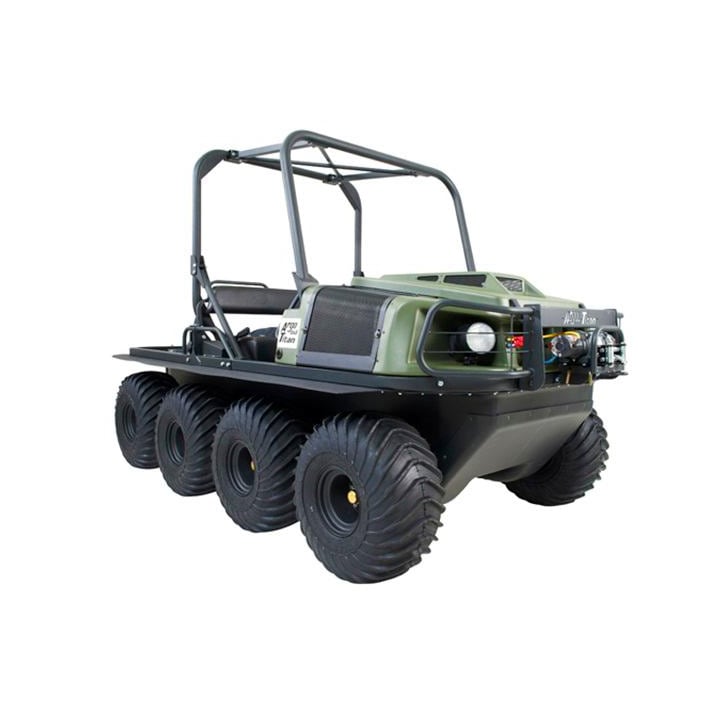
Argo Amphibious Lightweight Tactical All Terrain Vehicle
Photo Credit: Army
Emerson said he has used John Deere Gators to perform similar tasks while deployed and that this provides a much more effective alternative.
"Everything I saw on it was freaking amazing," Emerson said. "It's more reliable (than the Gator), and secondly it hauls more. It can go more places as well."
Robotic Human Type Targets
What it is:

Robotic Human-Type Targets (RHTTs)
Photo Credit: AEWE
They operate on a wireless signal with a range of up to a kilometer (with line of sight) from a graphical interface on a laptop.
Why soldiers should care: Because while many can hit a poster, soldiers don't fight wars against posters. Emerson said RHTTs can be programmed to do "anything humans would do" so a soldier at the range can better approximate a more realistic simulation.





